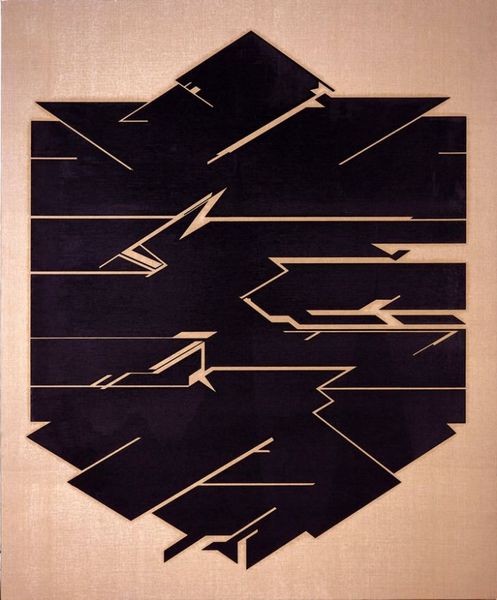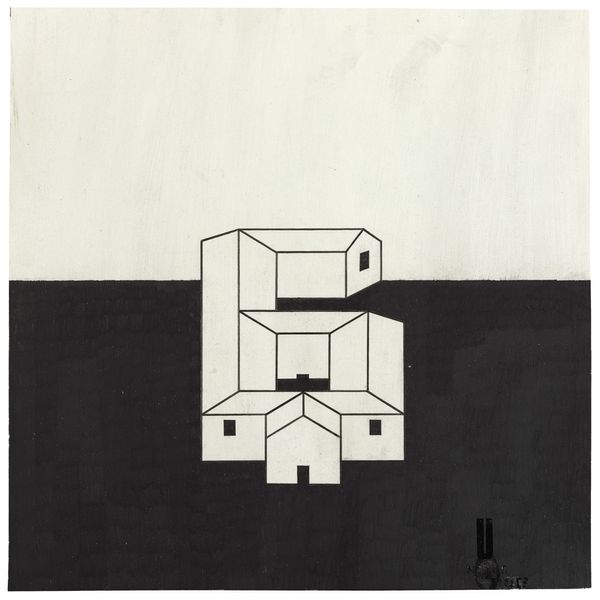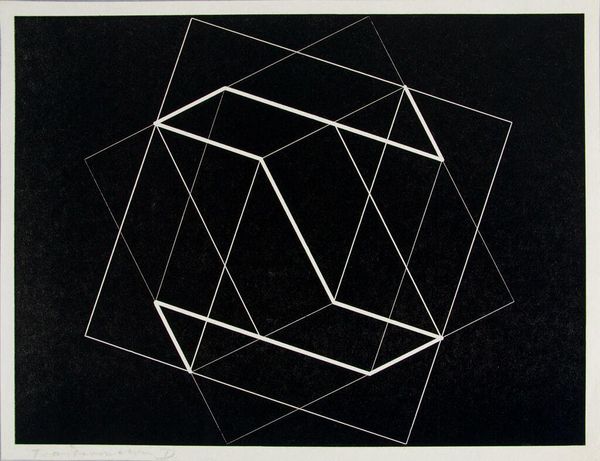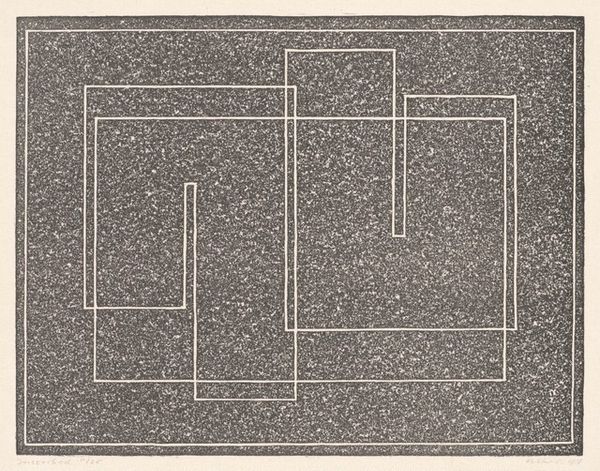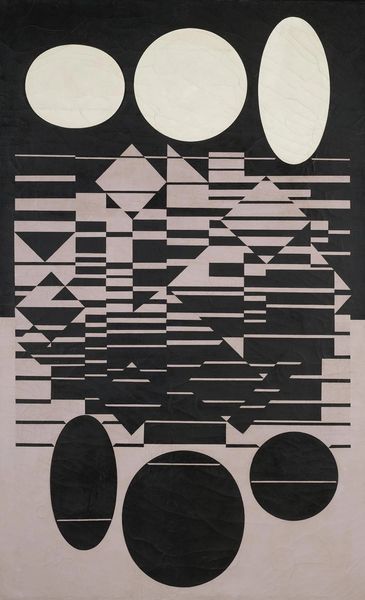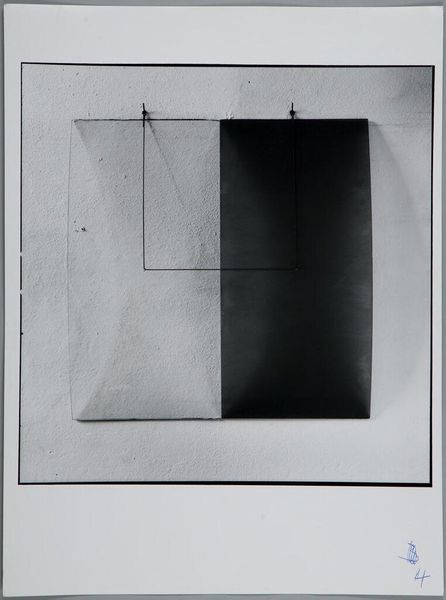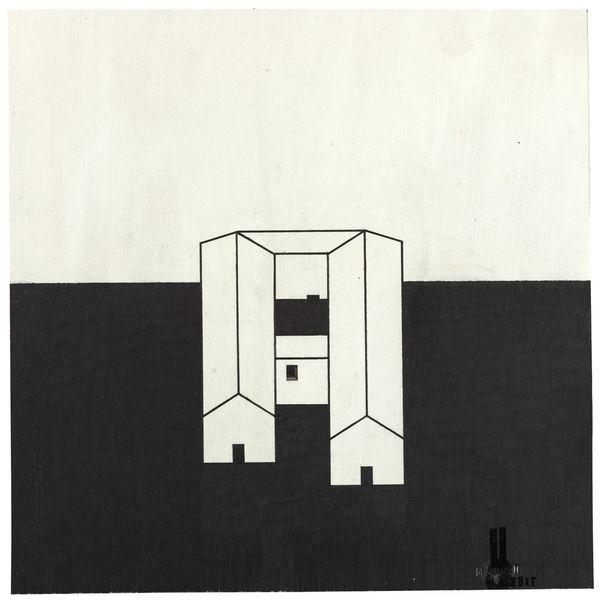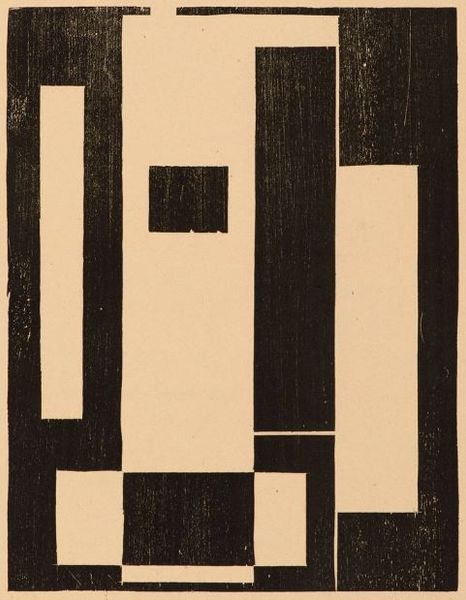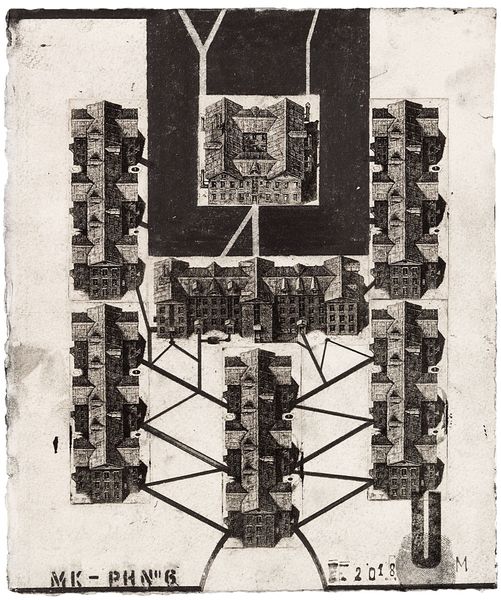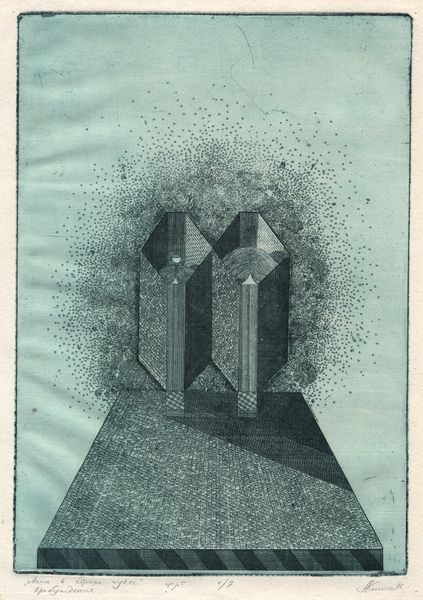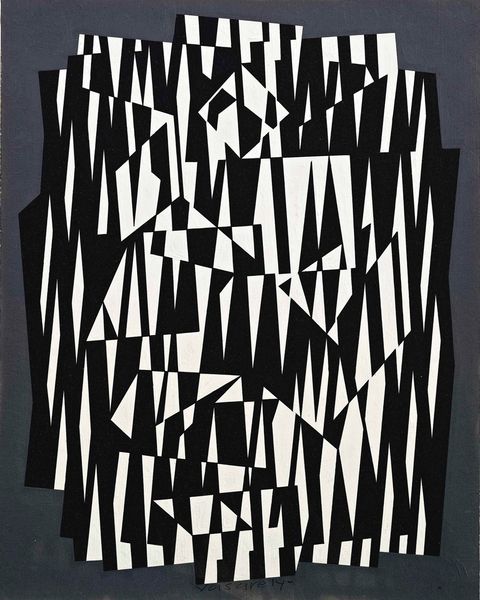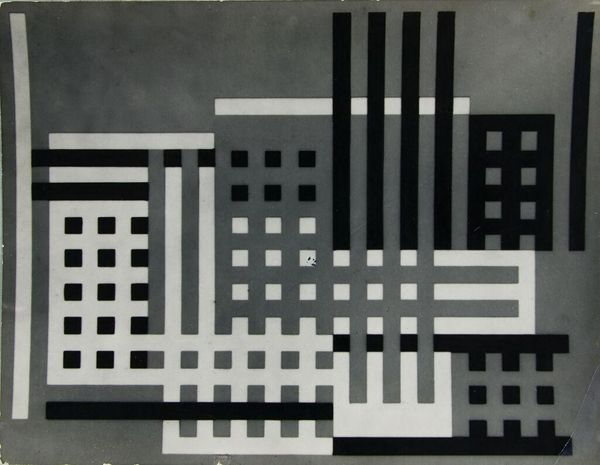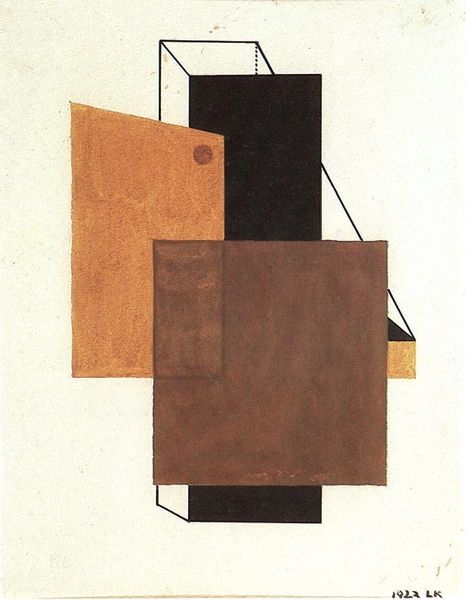
drawing, paper, ink
#
drawing
#
constructivism
#
paper
#
form
#
ink
#
geometric
#
geometric-abstraction
#
abstraction
#
line
#
modernism
Copyright: Oleksandr Aksinin,Fair Use
Curator: Oleksandr Aksinin’s 1976 work, titled "Sign," immediately draws attention with its bold geometric forms. What’s your first reaction to it? Editor: Stark. Incredibly stark. It’s like looking at a fortress or some kind of impenetrable structure rendered in monochrome. All those meticulously drawn lines creating different textures…it’s mesmerizing, yet cold. Curator: Considering Aksinin’s background in graphic arts and printmaking under a restrictive Soviet regime, it's fascinating to examine his choice of materials. He used simple ink on paper to construct this visually imposing image. There’s a certain ingenuity, a defiance even, in creating such complexity with such modest means. Editor: Absolutely. The sociopolitical context is vital. This was the height of the Cold War. What could a "Sign" represent then? A warning? A silent scream against oppression? The black square dominates, reminding one of Malevich and the dawn of revolutionary abstraction, now under the shadow of Soviet authority. How do you think this piece operated within the artistic community at the time? Curator: The repetitive labor evident in the linework transforms the process of drawing into an act of quiet resistance. Each deliberate line is a statement, pushing against the prescribed artistic boundaries. The materials themselves—ordinary, accessible—democratize the artistic process, subtly challenging the elite, state-sponsored art forms. Editor: It’s a compelling tension. This piece walks a tightrope, utilizing constructivist principles while existing within a system that co-opted and then constrained such artistic languages. How did the few sanctioned galleries and the broader viewing public receive works like "Sign," if they ever encountered it? Curator: Likely with mixed responses. For some, it represented the continuing evolution of modernism; for others, especially within the party, its ambiguous symbolism might have seemed suspicious. There's also the potential interplay between the creation of this work and underground art networks that it was likely associated with. Editor: In a way, that tension is precisely what makes "Sign" so resonant, even today. The artwork is suspended in a silent moment before making a decisive political statement. Curator: I agree. The drawing represents the resourcefulness and creativity born out of limitation. "Sign," to me, is also a statement about reclaiming artistry despite difficult and unbending creative circumstances. Editor: A stark yet quiet force, still communicating, still questioning.
Comments
No comments
Be the first to comment and join the conversation on the ultimate creative platform.
